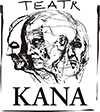The city creates a symbolic space, stretched throughout the past time – filled with values of its habitants.
Piotr Bogdanowicz
Etymologically, Polish word “miasto” (city) is very close to “miejsce” (site) – the feature shared by many Slavic as well as some Romance and Germanic languages. Thus one can guess that the very concept of a city is closely related to the sense of existence of a site. For ages particular societies have been creating the range of urban environments by introducing their own customs, traditions, culture and art, presenting individual character of space – and establishing sequences of sites. Meanwhile, vehement and often completely unplanned progressing urbanization of suburbia blurs physiognomic and mental borders of the city which begins to take regional dimension in real physical space. Sociologists observing such global phenomena formulated a term “to be among nothing” or “to be nowhere” – i.e. to be in “no-cities” or “no-places” deprived of any individual features – reflecting the lack of sense of identification with a space anywhere we are. It is quite obvious that modern cities can offer only particular sites and that they cannot be “the site” themselves any more. Facing that, can we create city sites today? What conditions should be met to make it possible? As many examples of urban-architectural units accomplished in recent decades prove, we are not able to cope with that problem. We are not able to create vital spaces, stimulating activity of their users, characterized by specific “radiation” – the mood of genius loci (“spirit of the site”). One should take into consideration that events taking place in real space project themselves on the immaterial site of perception of a city; they can be of fundamental meaning in establishing identity of sites. [Eminent Polish sociologist] Ewa Rewers claims that memory is one of the most important “raw materials” the urban identity is weaved of:
(…) However, if memory has a function of ‘city consciousness’ in urban structure, we can use it, or establish relations between contents of that memory and fragments of urban space – and in that way we can get to what is individual in the city, in its architecture, a form of urban individuality. Individual creative acts, architecture of the city as art, passing through selection taking place on the ground of collective memory, confer the form of originality upon the locus – we can see it at the same time as an event and as a form (…)
The real connection with a site can be established through layering of emotions associated with physical and metaphysical sphere of the experience of that site. Urban space is full of past events, important and unimportant, individual and collective dramas; incidents ignored by historians as well as events that influenced image and functioning of the city space.
Currently, participation of public art in restoration of urban environment is considered one of its most important functions, while the criteria of its “presence” in a given place have changed a lot. The centre of gravity has moved towards social issues from focusing only on aesthetic aspects; artwork has became a series of events; permanent installations have been replaced with temporal interventions; the priority is no longer given to the sources of meaning of an artwork but rather to perception of interpretation on the spot, taking into consideration senses of hearing, smell and touch, and autonomy of an artist has been transformed into expansion and collaboration of many participants of the process of making. Many artistic undertakings represent ephemeral art. Many interesting projects focused on accustoming habitants with their environments and establishing some connections with the sites have been accomplished in Europe and elsewhere – considering not only historical districts or districts unaccepted by their habitants (housing estates), but also completely new units.
Public art in Europe is still a domain of the former Western bloc – in Poland it is finding its path slowly. The need of creating attractive public spaces has been finally noticed and decision-makers began realizing that culture is the best way to promote the city – however, no complex ventures regarding urban spaces, involving not only town-planners, architects and landscape designers but also artists, have been undertaken yet.
Let the artists speak…
Helena Freino, Doctor of Architecture Engineering
PLACES NO.THEATRE.PL
SHIPYARD “POŁUDNIE”

Shipyard East / Ludomir Franczak, author: Adam Ptaszyński
More photos here.
MUNICIPAL PUBLIC LIBRARY NO. 28 IN SZCZECIN

Municipal Public Library no. 28 in Szczecin, author: Adam Ptaszyński
More photos here.
THE WEST POMERANIAN VOIVODESHIP OFFICE IN SZCZECIN

Zach , author: Adam Ptaszyński
More photos here.
THE ARKONA FOREST
THE K1 HALL IN THE FORMER SZCZECIN SHIPYARD
More photos here.
MAIN RAILWAY STATION – THE BAR
 More photos here
More photos here
TRAFO
 More photos here.
More photos here.
HARBOR GATE
ŻOŁNIERZA SQUARE



